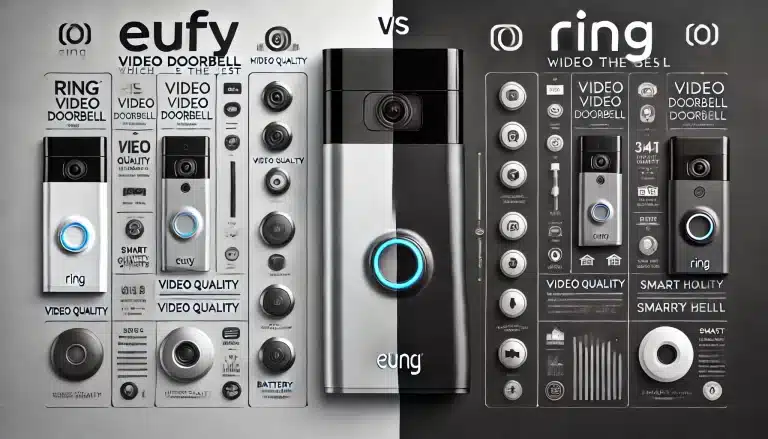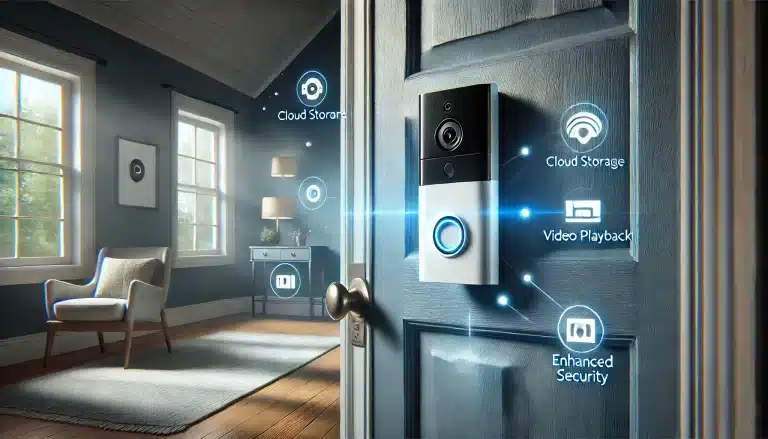Reolink vs Eufy Doorbell: Comprehensive Review & Comparison (2025)
Reolink vs Eufy—choosing a doorbell camera in 2025 isn’t as easy as it seems. With the rise of smart homes, picking the right doorbell camera is critical for both security and convenience. Reolink and Eufy have become industry leaders, offering a variety of innovative products. There are numerous types and models available, each suited for different needs and budgets, as you can easily see on Amazon:
In this article, I will deeply compare specific models from Reolink and Eufy, based on my personal experience, helping you determine which is the best choice for your home.
Reolink Doorbell Camera Review

Features:
- Video Quality: 2K HD resolution providing crisp and clear images.
- Motion Detection and Alerts: Advanced motion detection with instant smartphone alerts.
- Two-way Audio: Clear audio for real-time conversations.
- Night Vision Performance: Impressive night vision providing clear images even in pitch darkness.
- Smart Integration: Compatible with Alexa and Google Home for seamless smart home experience.
- Storage Options: Supports cloud storage and local storage via SD cards.
- Installation Process: User-friendly and easy-to-follow instructions.
What I Liked: The Reolink doorbell camera stood out due to its exceptional video clarity, intuitive motion detection, and straightforward setup process. The two-way audio feature is particularly effective, making it easy to communicate with visitors clearly.
What I Didn’t Like: My main concern was with occasional delays in motion notifications. Additionally, the requirement for subscription-based cloud storage to access certain advanced features was slightly disappointing.
Eufy Doorbell Camera Review

Features:
- Video Resolution: Ultra-clear 2K resolution ensuring detailed visuals.
- Battery Life: Excellent battery performance, lasting up to 180 days.
- Motion Sensitivity and AI Detection: Highly accurate AI-powered motion detection, reducing false alarms.
- Night Vision: Strong infrared night vision delivering clear images.
- Smart Home Integration: Easily integrates with major platforms including Alexa and Google Home.
- Storage Solutions: Free local storage, no monthly subscription required.
- Installation Experience: Quick, wireless, and easy installation.
What I Liked: Eufy’s impressive battery life, excellent video quality, and subscription-free local storage were the highlights. The AI detection capabilities significantly reduce false alarms, adding great value.
What I Didn’t Like: Occasional connectivity issues were a bit frustrating, and the two-way audio quality, though good, didn’t quite match Reolink’s superior clarity.
Direct Comparison – Reolink vs Eufy Doorbell
| Feature | Reolink | Eufy |
|---|---|---|
| Video Quality | Excellent (2K) | Excellent (2K) |
| Audio Quality | Excellent clarity | Good, slight lag |
| Motion Detection | Accurate, minor delays | Very accurate, AI-driven |
| Night Vision | Clear, detailed | Sharp, reliable |
| Smart Home Integration | Alexa, Google Home | Alexa, Google Home |
| Storage Options | Cloud (subscription), local SD card | Free local storage, no subscription |
| Installation | Easy wired setup | Quick wireless installation |
| Price & Value | Good value, moderate cost | Excellent value, slightly higher cost |
Both cameras deliver superb video and reliable night vision. However, Eufy’s local storage and outstanding battery life provide a slight edge, especially if subscription costs are a concern. On the other hand, Reolink’s better audio clarity is great for communication.
Reolink vs Eufy vs Arlo – Brief Overview
When briefly comparing Arlo with Reolink and Eufy, Arlo offers competitive features like 2K HDR video, reliable motion detection, and strong night vision performance. However, Arlo’s reliance on subscription-based cloud storage makes it slightly less appealing compared to Eufy’s subscription-free storage.
Comparative Table
| Aspect | Reolink | Eufy | Arlo |
| Price | Moderate | Moderate-High | High |
| Video Resolution | 2K HD | 2K HD | 2K HDR |
| Battery vs Wired | Wired | Wireless | Wireless/Wired |
| Storage Options | Cloud (paid), SD card | Free Local Storage | Cloud (paid) |
| Smart Integration | Excellent | Excellent | Excellent |
| User Ratings | 4.5/5 | 4.7/5 | 4.4/5 |
See Arlo Doorbell Cameras on Amazon
My Personal Pick
After extensive comparison, my top choice is the Eufy Doorbell Camera. It combines excellent battery life, powerful AI-driven motion detection, and subscription-free local storage. Overall, it provides remarkable performance and value, making it my preferred option for 2025.
Frequently Asked Questions
- Is Reolink better than Eufy for night vision?
- Both offer excellent night vision, but Eufy edges slightly ahead with clearer images.
- Can Eufy doorbell camera record continuously?
- No, it records based on motion detection only.
- Do Reolink cameras require subscription fees?
- Optional, for cloud storage.
- Is installation easier for Eufy or Reolink?
- Eufy is easier due to its wireless installation.
- Which has better video quality: Eufy vs Reolink?
- Both have excellent 2K quality.
- Are Eufy doorbell cameras compatible with Alexa?
- Yes, fully compatible.
- Does Reolink work well with Google Home?
- Yes, seamless integration.
- How secure are Eufy and Reolink doorbell cameras against hacking?
- Both brands use advanced encryption and security measures.
- What is the warranty coverage for both brands?
- Typically, both provide a 1-year warranty.
- Which camera offers better storage options?
- Eufy offers better local, subscription-free storage.
- Are batteries replaceable on Eufy doorbell cameras?
- Yes, batteries can be replaced.
- Does Reolink offer motion-zone customization?
- Yes, highly customizable.
- Can I view Reolink or Eufy cameras remotely via smartphone?
- Yes, both offer robust mobile apps.
- Which brand provides better customer support?
- Both offer strong support; personal experiences slightly favor Eufy.
- Is there a clear winner between Reolink vs Eufy in terms of price-to-performance ratio?
- Eufy provides slightly better overall value.
Conclusion
Choosing between Reolink vs Eufy in 2025 comes down to personal preference and specific needs. While both brands deliver excellent quality, Eufy edges out as the best overall choice due to superior battery life, free local storage, and AI motion detection. Ultimately, assess your requirements carefully and pick the model that fits best.







